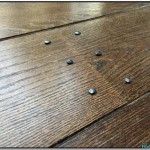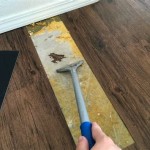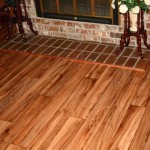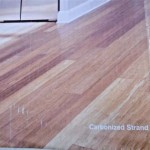Home Parquet Flooring: A Comprehensive Guide
Parquet flooring, characterized by its geometric mosaic patterns created from small pieces of wood, has been a popular choice for homeowners seeking elegance and durability for centuries. Originating in the 17th century as a more affordable alternative to marble flooring, parquet offers a timeless aesthetic appeal that complements a wide range of interior design styles. This article will delve into the various aspects of home parquet flooring, exploring its types, installation methods, maintenance requirements, and overall value proposition.
Types of Parquet Flooring
The diversity of parquet flooring stems primarily from the types of wood used and the patterns they are arranged in. Understanding these variations is crucial for selecting the most suitable option for a specific home and lifestyle.
Solid Wood Parquet: Constructed from single pieces of hardwood, solid wood parquet offers exceptional durability and longevity. Common wood species include oak, maple, walnut, cherry, and hickory. Solid wood parquet can be sanded and refinished multiple times, allowing homeowners to maintain its beauty for generations. However, solid wood is susceptible to expansion and contraction with changes in humidity, requiring careful acclimatization during installation and consistent humidity control within the home.
Engineered Parquet: Engineered parquet flooring consists of a thin veneer of hardwood bonded to a core of multiple layers of plywood or fiberboard. This construction method significantly enhances the flooring's stability and resistance to moisture. Engineered parquet is less prone to warping, cupping, or gapping compared to solid wood, making it a suitable choice for areas with fluctuating humidity levels, such as basements or kitchens. While it can be sanded and refinished, the number of times is limited by the thickness of the veneer.
Parquet Patterns: Beyond the material, the pattern in which the wood pieces are arranged defines the overall appearance of parquet flooring. Several classic patterns have stood the test of time, each offering a unique visual impact.
Herringbone: Characterized by its distinctive V-shaped pattern, herringbone is created by arranging rectangular wood blocks at a 90-degree angle to each other. This pattern adds a sense of movement and sophistication to any room.
Chevron: Similar to herringbone, chevron features wood blocks cut at an angle and joined to form a continuous zigzag pattern. The angles are typically 45 or 60 degrees, resulting in a more linear and uniform appearance compared to herringbone.
Basket Weave: Resembling the interlaced pattern of a woven basket, this design alternates groups of parallel wood blocks to create a textured and visually appealing surface.
Brick: A simple yet elegant pattern featuring rectangular wood blocks laid in a staggered, brick-like arrangement. This pattern is often used to create a more casual and rustic aesthetic.
Squares: This pattern employs square wood blocks aligned in a grid formation, offering a clean and contemporary look. Variations can be achieved by using different wood species or stains for alternating squares.
Installation Methods for Parquet Flooring
The proper installation of parquet flooring is essential for ensuring its longevity and performance. The choice of installation method depends on the type of parquet (solid or engineered), the subfloor material, and the homeowner's preferences.
Glue-Down Installation: This method involves applying a specialized adhesive directly to the subfloor and then pressing the parquet blocks into the adhesive. Glue-down installation provides a secure and stable bond, minimizing movement and preventing squeaking. It is a suitable choice for both solid and engineered parquet, particularly in areas with heavy foot traffic or where dimensional stability is critical.
Preparation: The subfloor must be clean, level, and dry before applying the adhesive. Any imperfections or unevenness should be addressed to ensure a smooth and uniform surface.
Adhesive: The correct type of adhesive must be used, as specified by the flooring manufacturer. Using the wrong adhesive can lead to bonding failures and premature flooring deterioration.
Pattern Alignment: Precision and attention to detail are crucial when laying out the parquet pattern. Using chalk lines and measuring tools to ensure accurate alignment is essential for achieving a visually appealing result.
Nail-Down Installation: Primarily used for solid wood parquet, this method involves nailing the wood blocks directly to a wooden subfloor. Nail-down installation provides a strong and durable connection, allowing the wood to expand and contract naturally with changes in humidity. It is generally not recommended for engineered parquet due to the thinner veneer.
Subfloor Requirements: The subfloor must be structurally sound and capable of holding nails securely. A plywood or OSB subfloor is typically required.
Nail Selection: The appropriate type and size of nails must be used to prevent splitting the wood and ensure a secure hold. Ring-shank nails are often preferred for their enhanced holding power.
Expansion Gaps: Adequate expansion gaps must be left around the perimeter of the room to allow for natural wood movement. These gaps are typically covered with baseboards or molding.
Floating Installation: This method is primarily used for engineered parquet and involves interlocking the edges of the flooring planks to create a "floating" surface that is not directly attached to the subfloor. A thin underlayment is typically placed between the parquet and the subfloor to provide cushioning and reduce noise transmission. Floating installation is a relatively quick and easy method, making it a popular choice for DIY projects.
Underlayment: The underlayment provides a smooth and stable surface for the parquet and helps to reduce noise and moisture transmission.
Expansion Gaps: Similar to nail-down installation, adequate expansion gaps must be left around the perimeter of the room.
Acclimatization: Before installation, the parquet flooring must be allowed to acclimatize to the room's temperature and humidity for several days to minimize expansion and contraction after installation.
Maintenance and Care of Parquet Flooring
Proper maintenance and care are essential for preserving the beauty and longevity of parquet flooring. Regular cleaning and preventive measures can help to prevent scratches, dents, and other types of damage.
Regular Cleaning: Sweep, dust, or vacuum the floor regularly to remove dirt, dust, and debris. Use a soft-bristled brush or a vacuum cleaner with a felt attachment to avoid scratching the surface.
Damp Mopping: Periodically damp mop the floor with a mild detergent specifically designed for wood floors. Avoid using excessive water, as it can seep into the seams and damage the wood. Always wring out the mop thoroughly before applying it to the floor.
Spill Management: Clean up spills immediately to prevent staining and warping. Use a soft cloth to blot the spill and avoid rubbing, which can spread the stain.
Protective Measures: Place rugs or mats at entrances and in high-traffic areas to protect the floor from dirt, scratches, and wear. Use furniture pads under the legs of chairs, tables, and other heavy objects to prevent dents and scratches.
Refinishing: Over time, parquet flooring may require refinishing to restore its original luster and remove scratches and imperfections. Solid wood parquet can be sanded and refinished multiple times, while engineered parquet may have limited refinishing options depending on the thickness of the veneer. The refinishing process involves sanding the floor to remove the old finish, applying a new stain (optional), and then applying several coats of protective finish.
Humidity Control: Maintaining a consistent humidity level within the home is crucial for preventing excessive expansion and contraction of the wood. Use a humidifier or dehumidifier as needed to maintain a relative humidity level of 30-50%.
Parquet flooring, whether solid or engineered, adds value and elegance to a home. From the intricate herringbone to the classic square pattern, the aesthetic possibilities are vast. Understanding the nuances of installation and maintenance will help ensure the longevity and beauty of this timeless flooring choice.
By considering the various factors outlined above, homeowners can make informed decisions about selecting, installing, and maintaining parquet flooring that complements their individual style and enhances the overall value of their property. The enduring appeal of parquet flooring, combined with its durability and versatility, makes it a wise investment for any home.

Trafficmaster Brown Wood Parquet 4 Mil X 12 In W L And Stick Water Resistant Vinyl Tile Flooring 30 Sqft Case 65657 The Home Depot

Types Of Hardwood Flooring Forbes Home

Home Scheucher Parkett

Hardwood Flooring The Home Depot

Pure Natural Engineered Wood Flooring Home Tarkett

Why Choose Hardwood Floors Over Carpet Cameron The Sandman Wood Flooring Contractor

Wood Flooring For Bedroom Types Ideas

Hard Wood Flooring Essential To Beautify Your Home Apex Remodeling In Lake Forest

How To Choose The Right Wooden Flooring Cost Maintenance Lifespan

Tida Parquet Hoog Design Exclusive Living Inspiration
Related Posts








